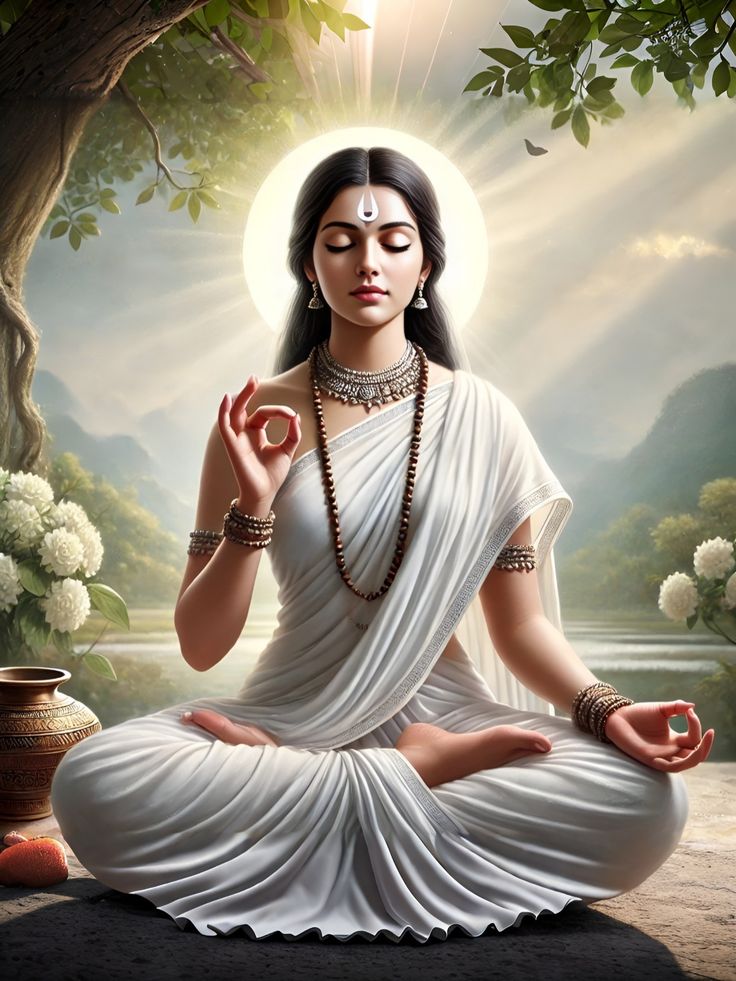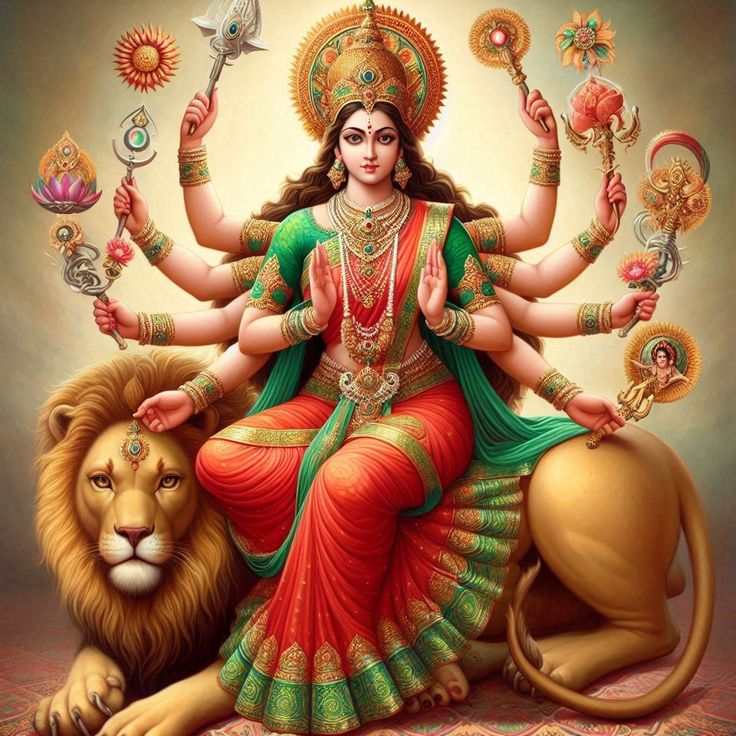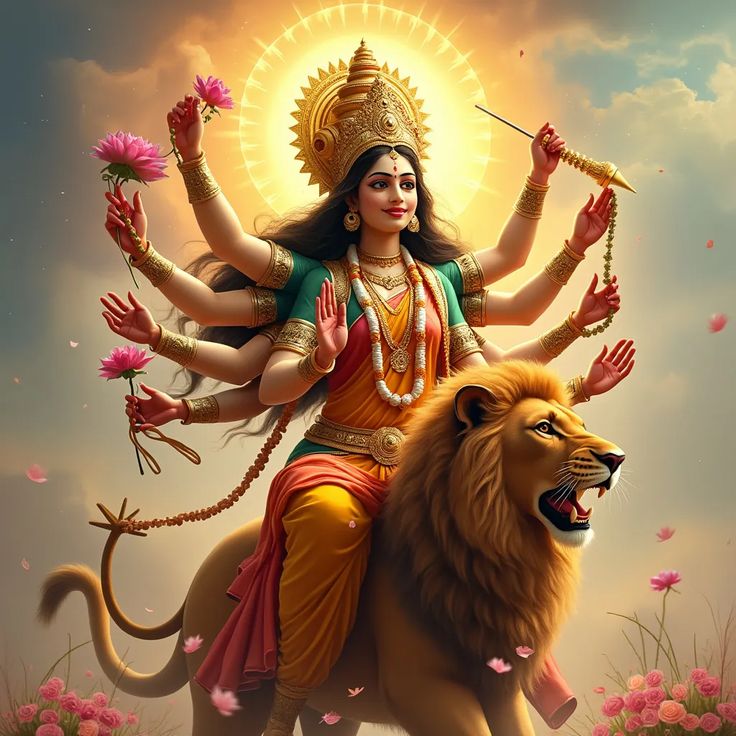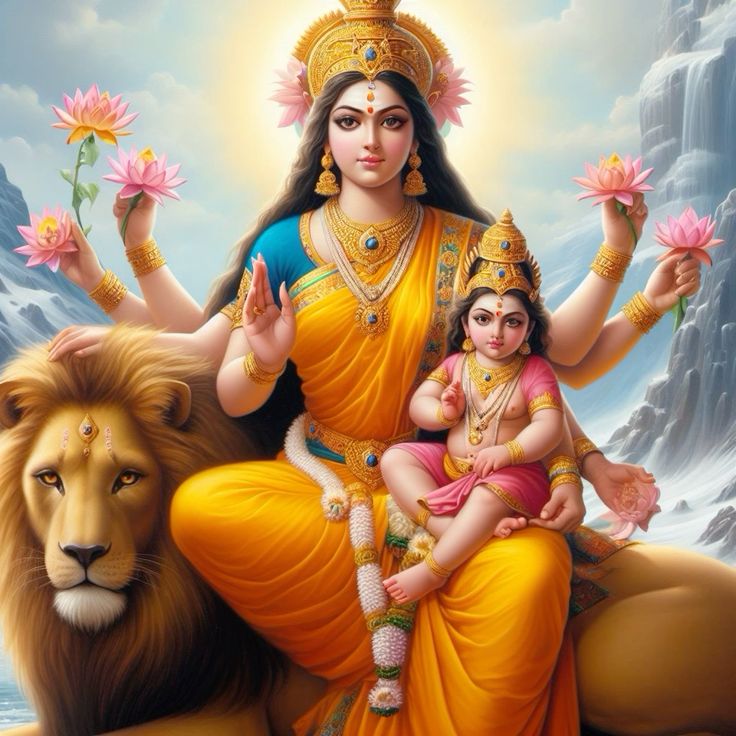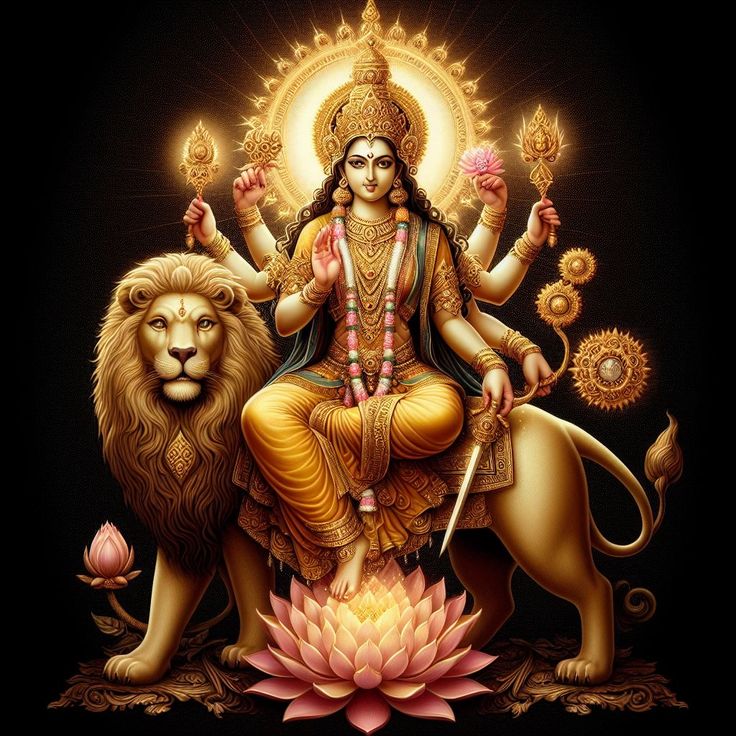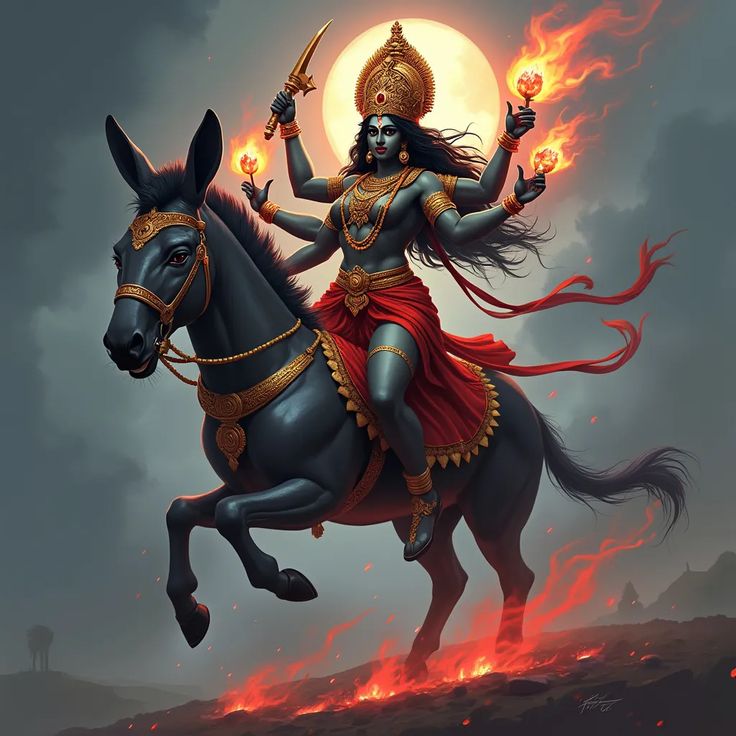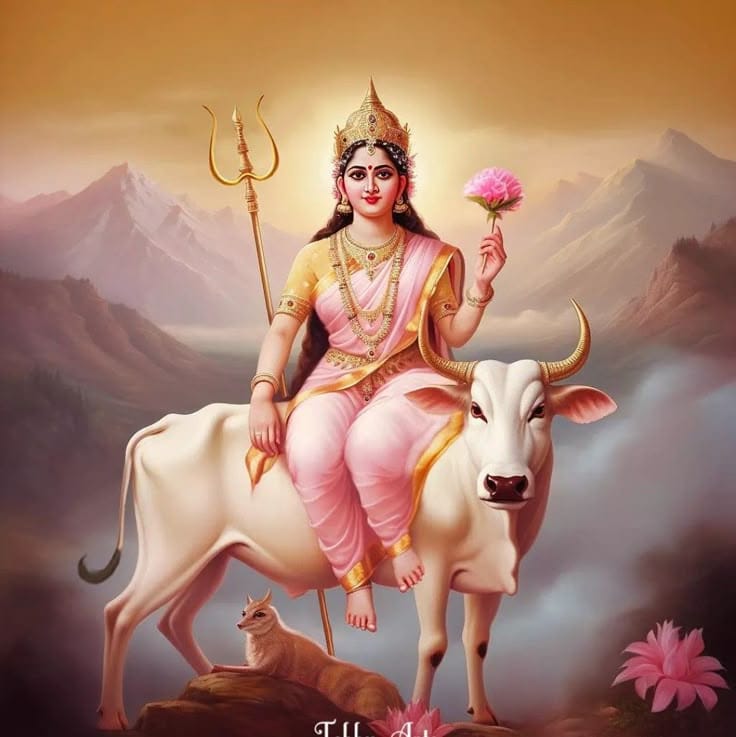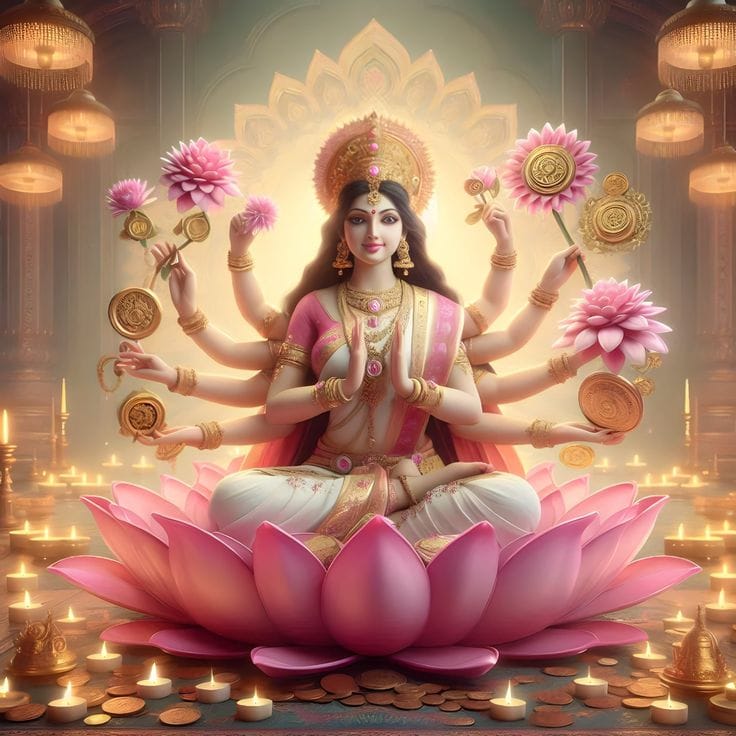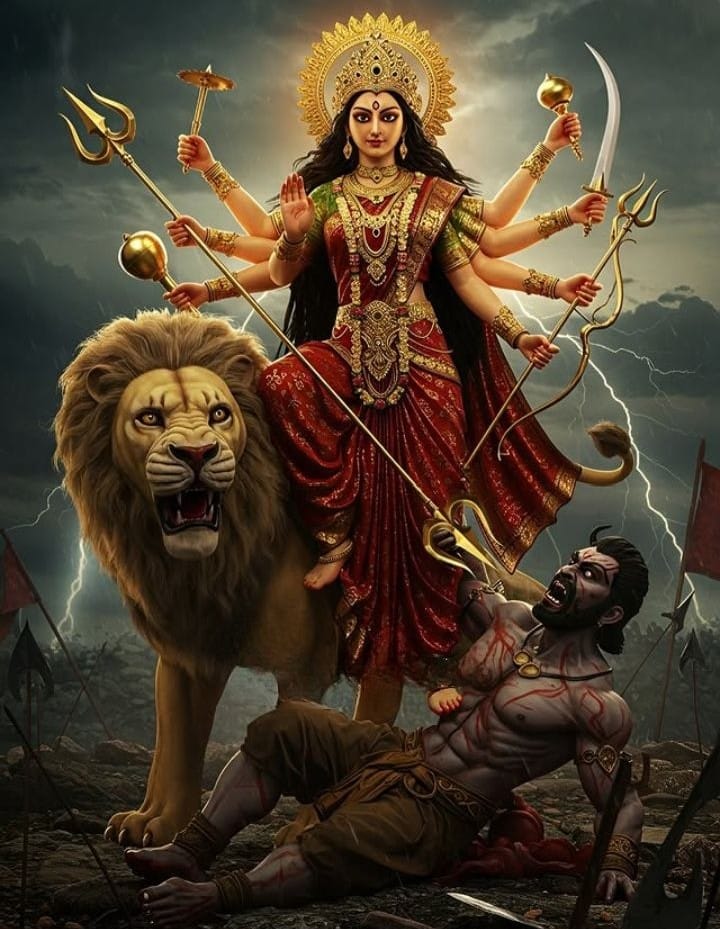1. Shailaputri — Daughter of the Mountains
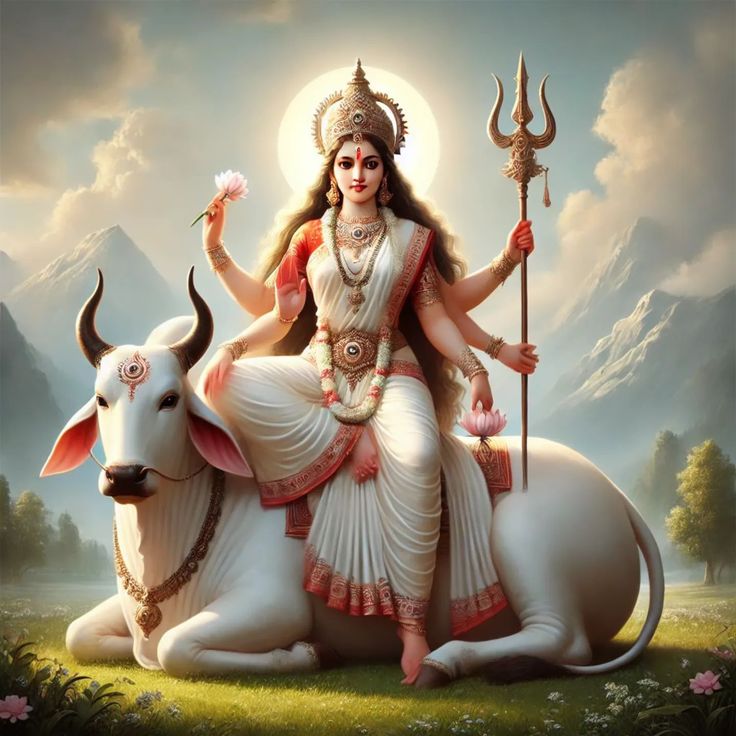
Shailaputri means "daughter of the mountain." In a previous birth she was Sati, daughter of Daksha. After Sati immolated herself at Daksha's yagna because of the insults to Lord Shiva, Shiva destroyed the yagna. Sati was reborn as Parvati, daughter of Himavat (the mountain king), and came to be known as Shailaputri. From a young age she performed rigorous penance and devotion to Shiva, and eventually became his consort.
Worship of Shailaputri on the first day of Navratri is associated with awakening the Muladhara (root) chakra, gaining strength and stability, and beginning the spiritual journey. She is depicted riding a bull, Nandi, holding a trident and a lotus, symbolizing control over the physical, mental, and spiritual realms and purity of intent.
